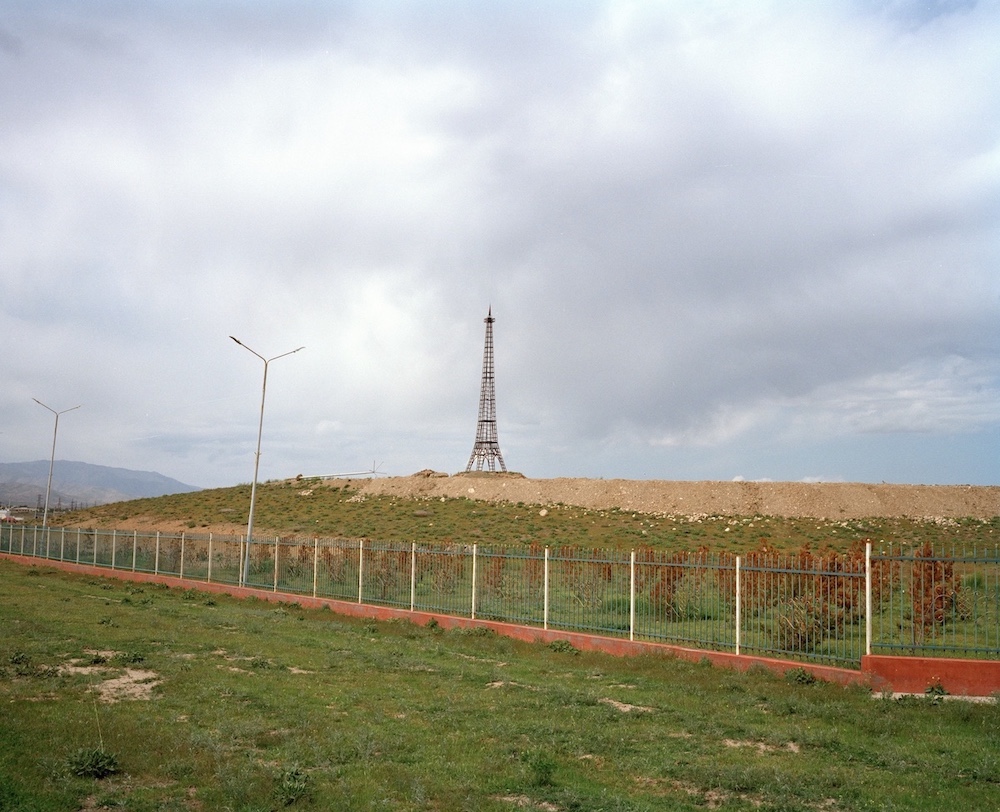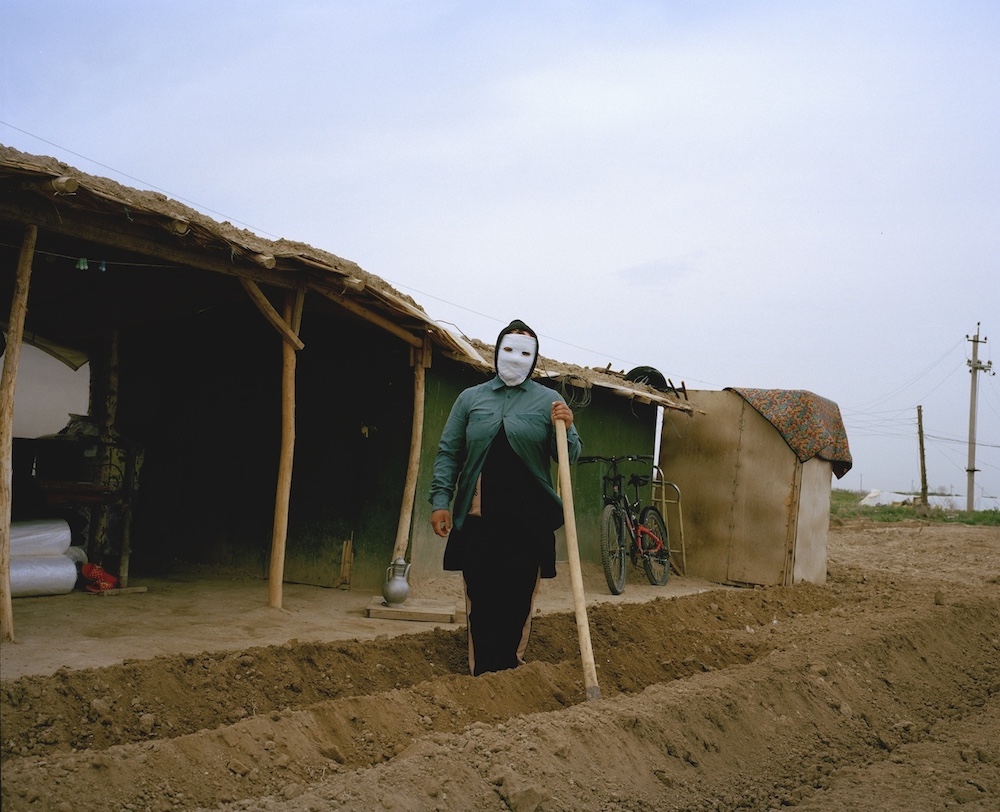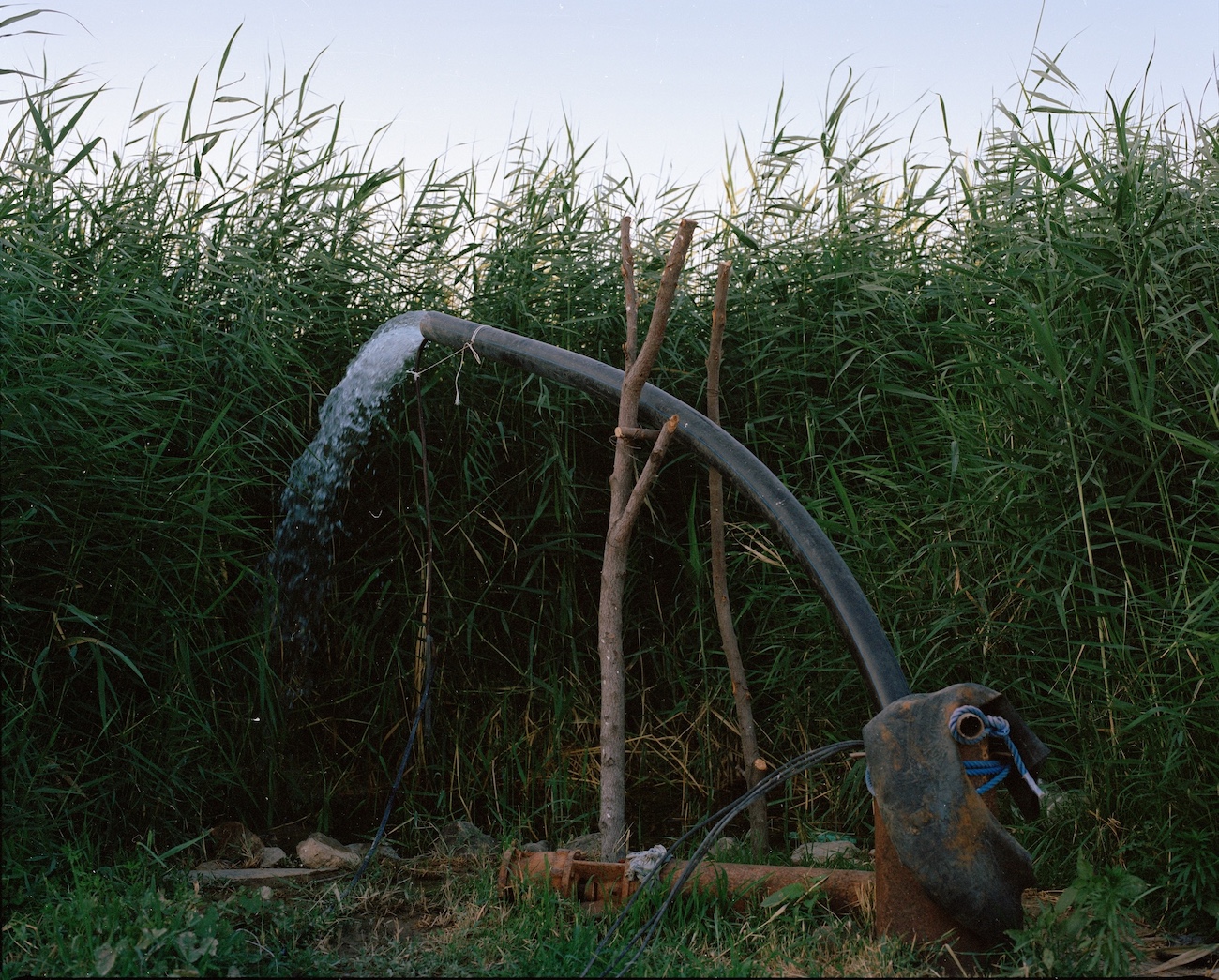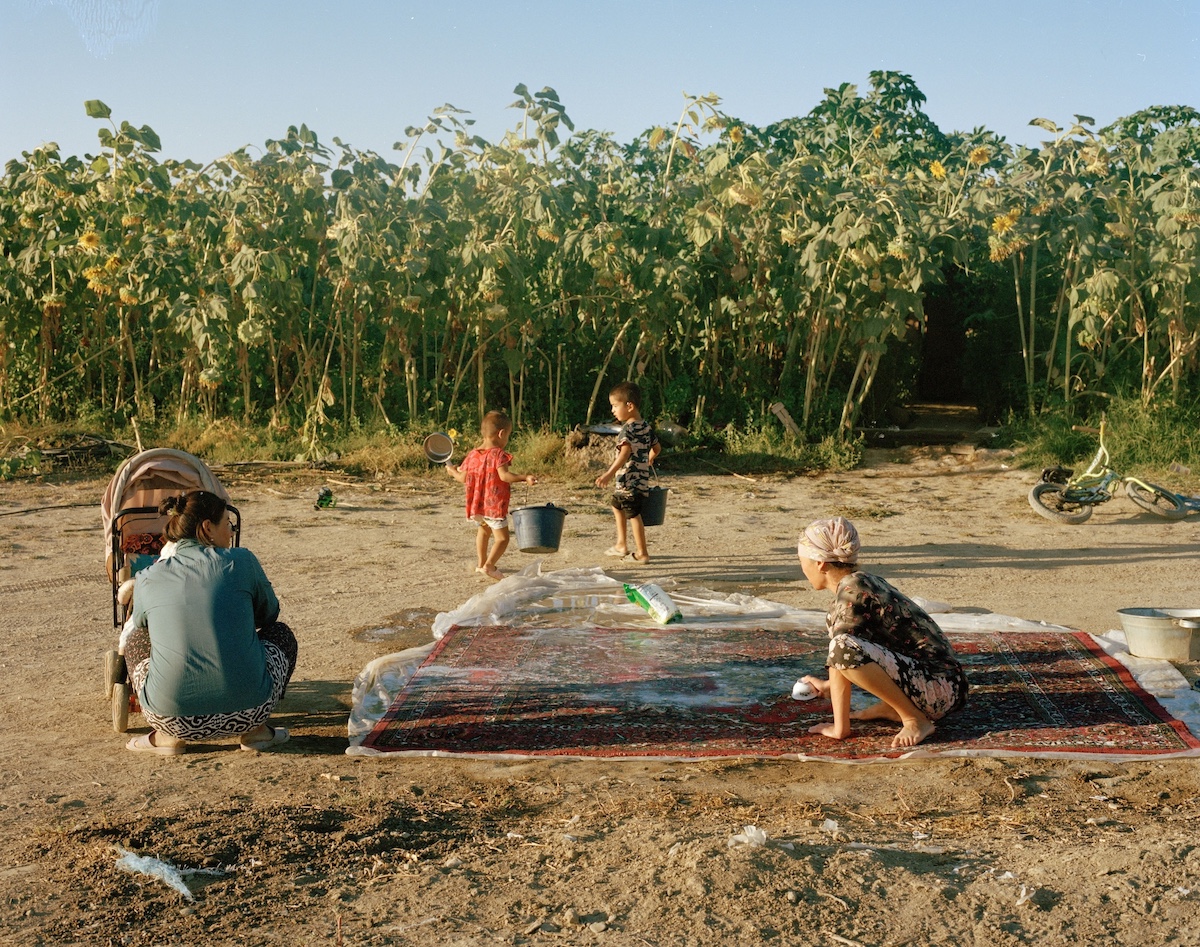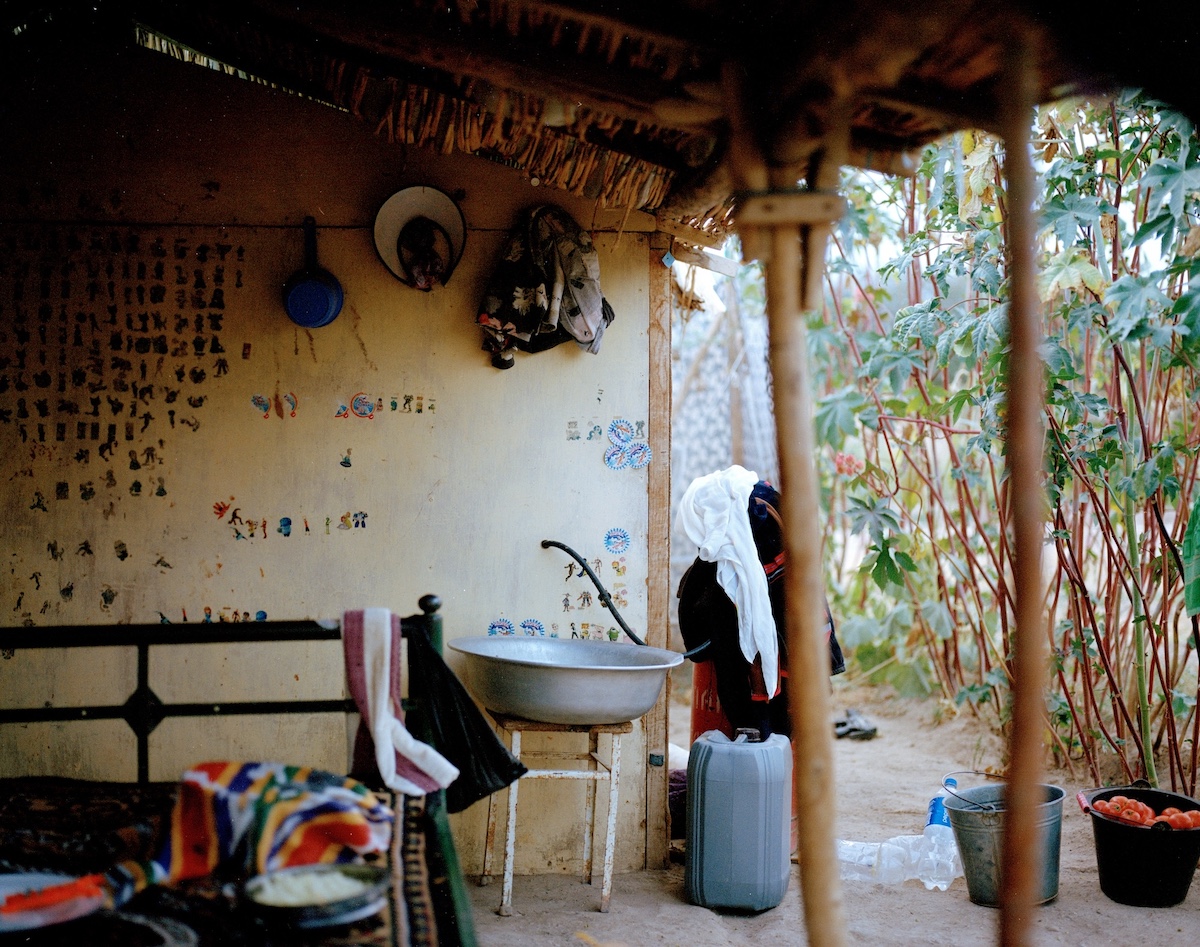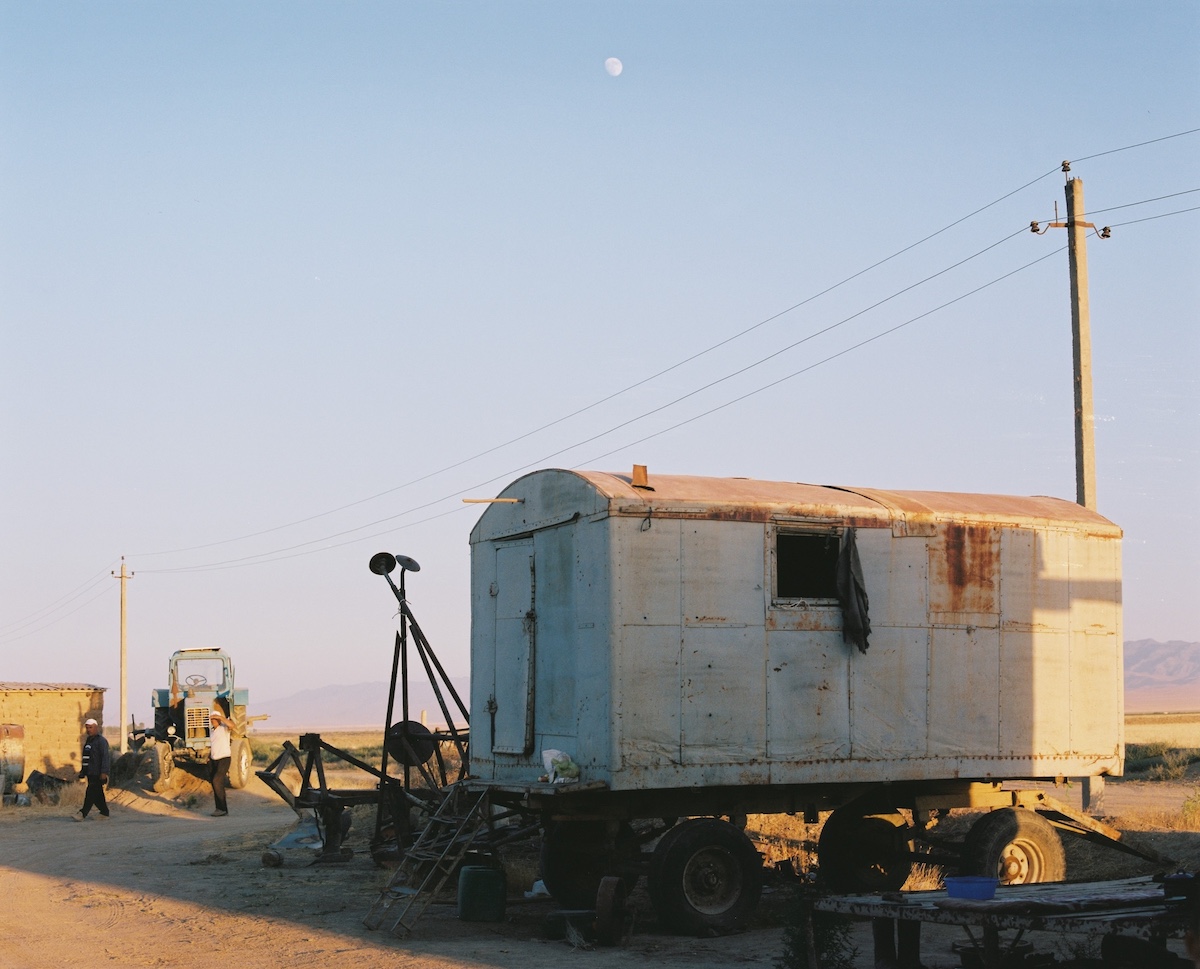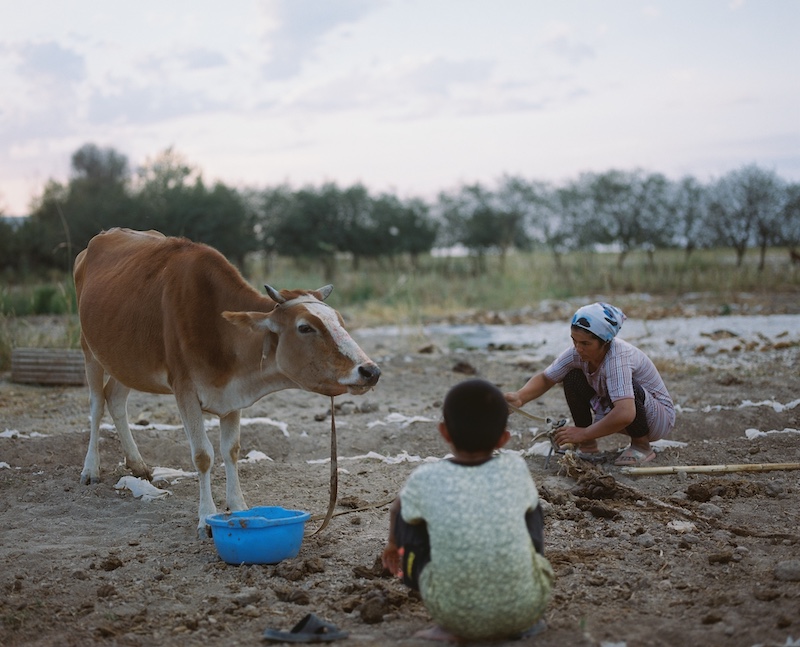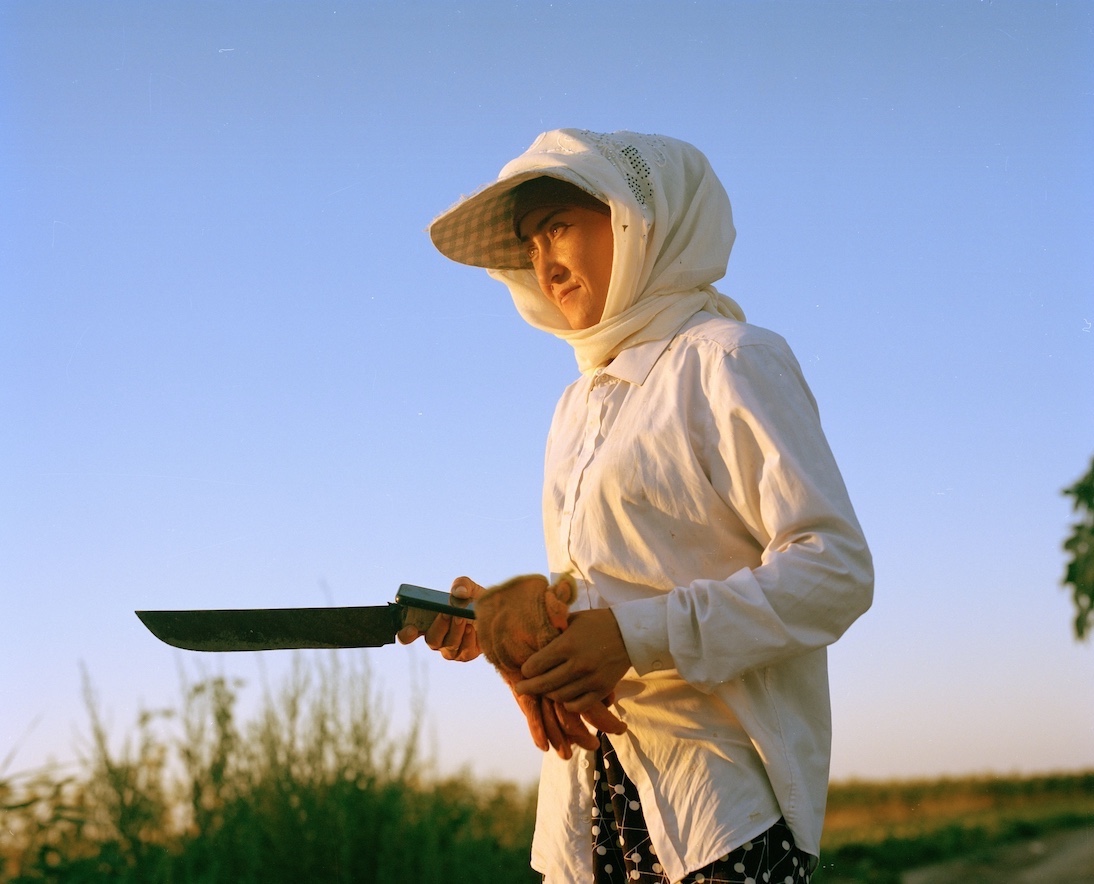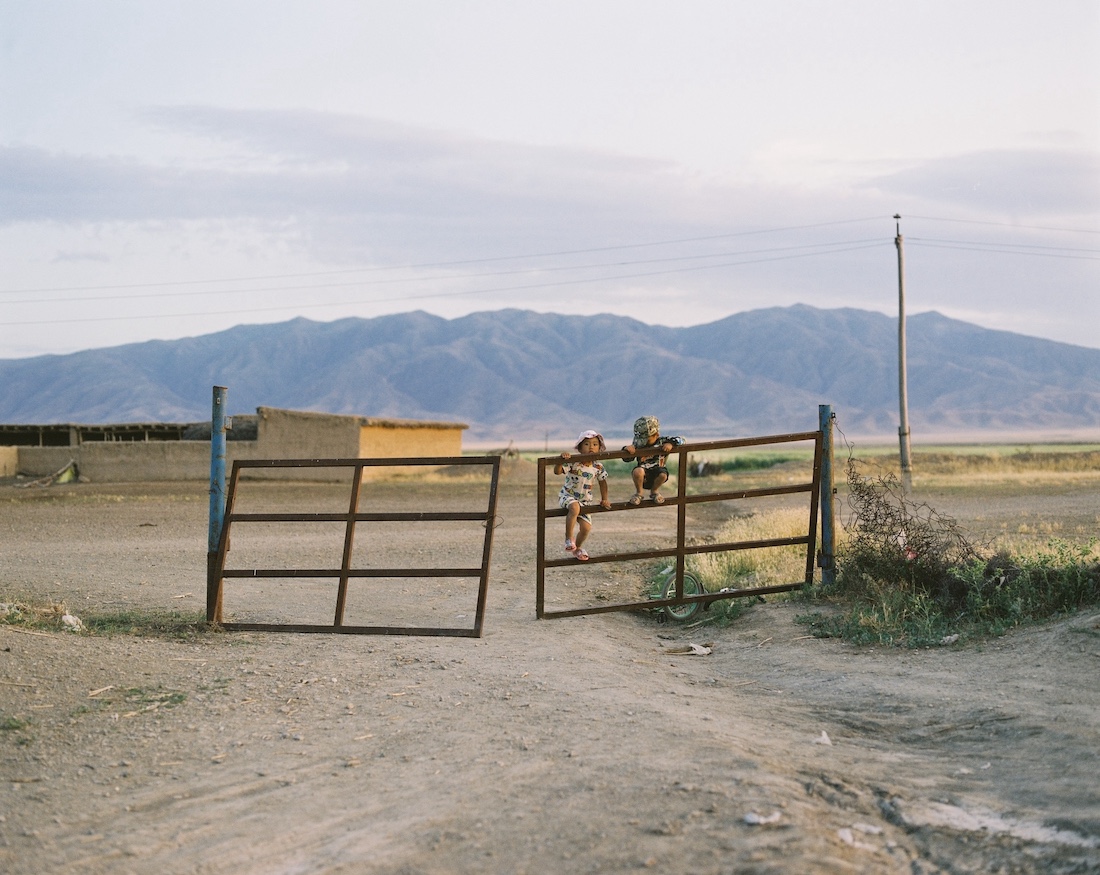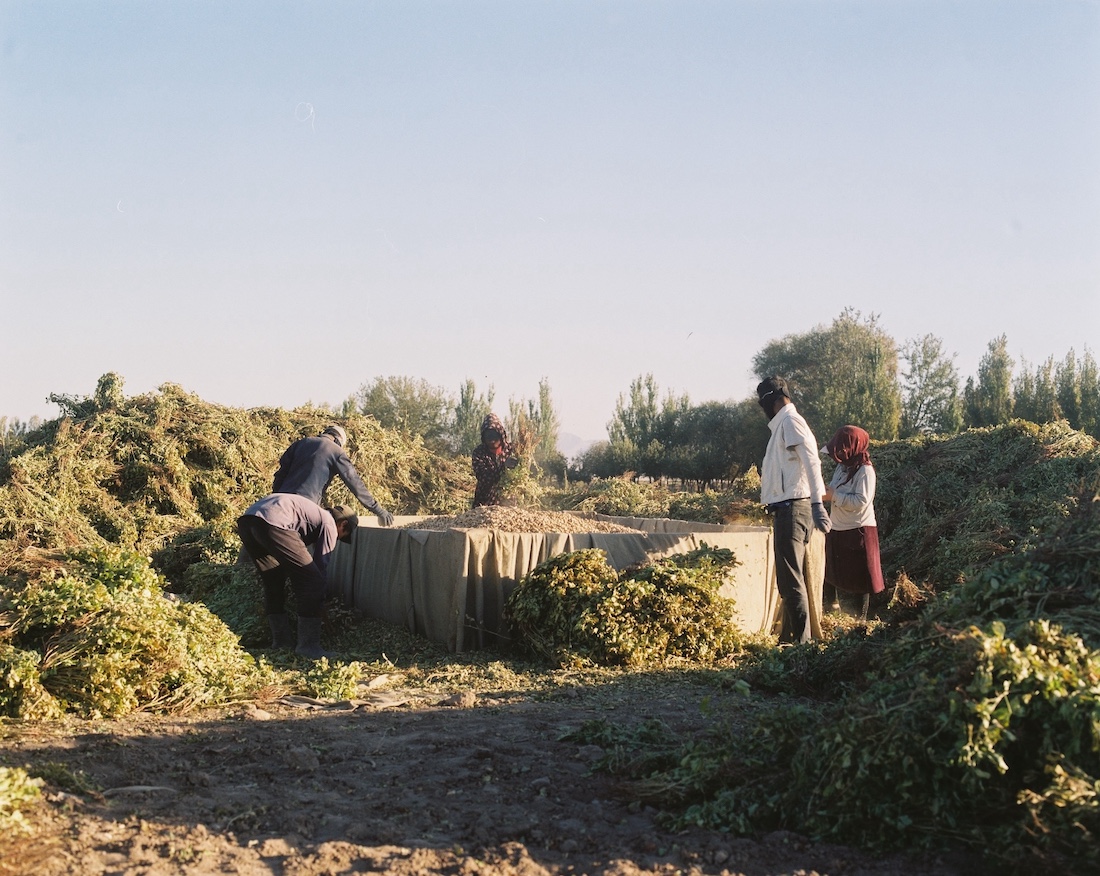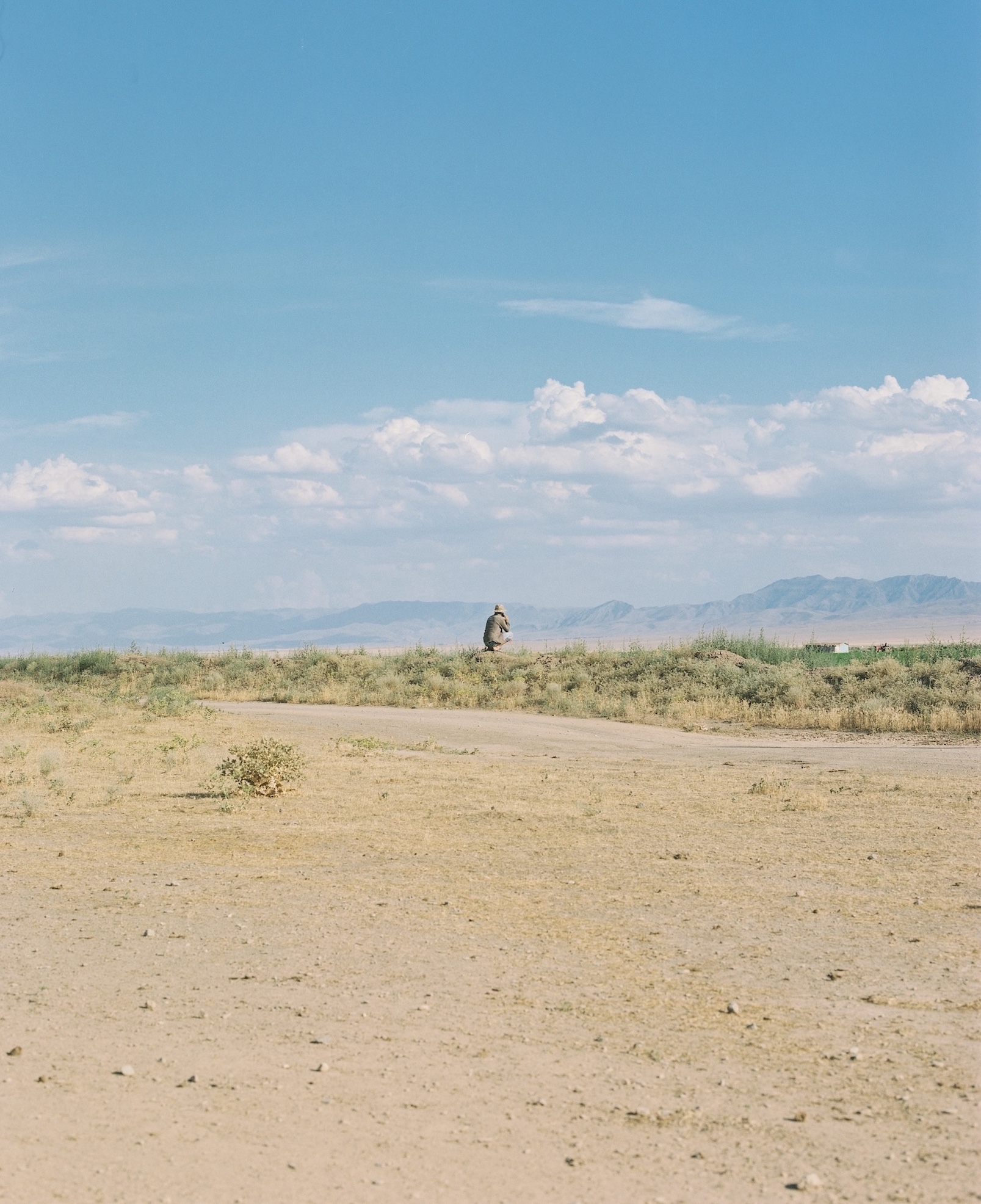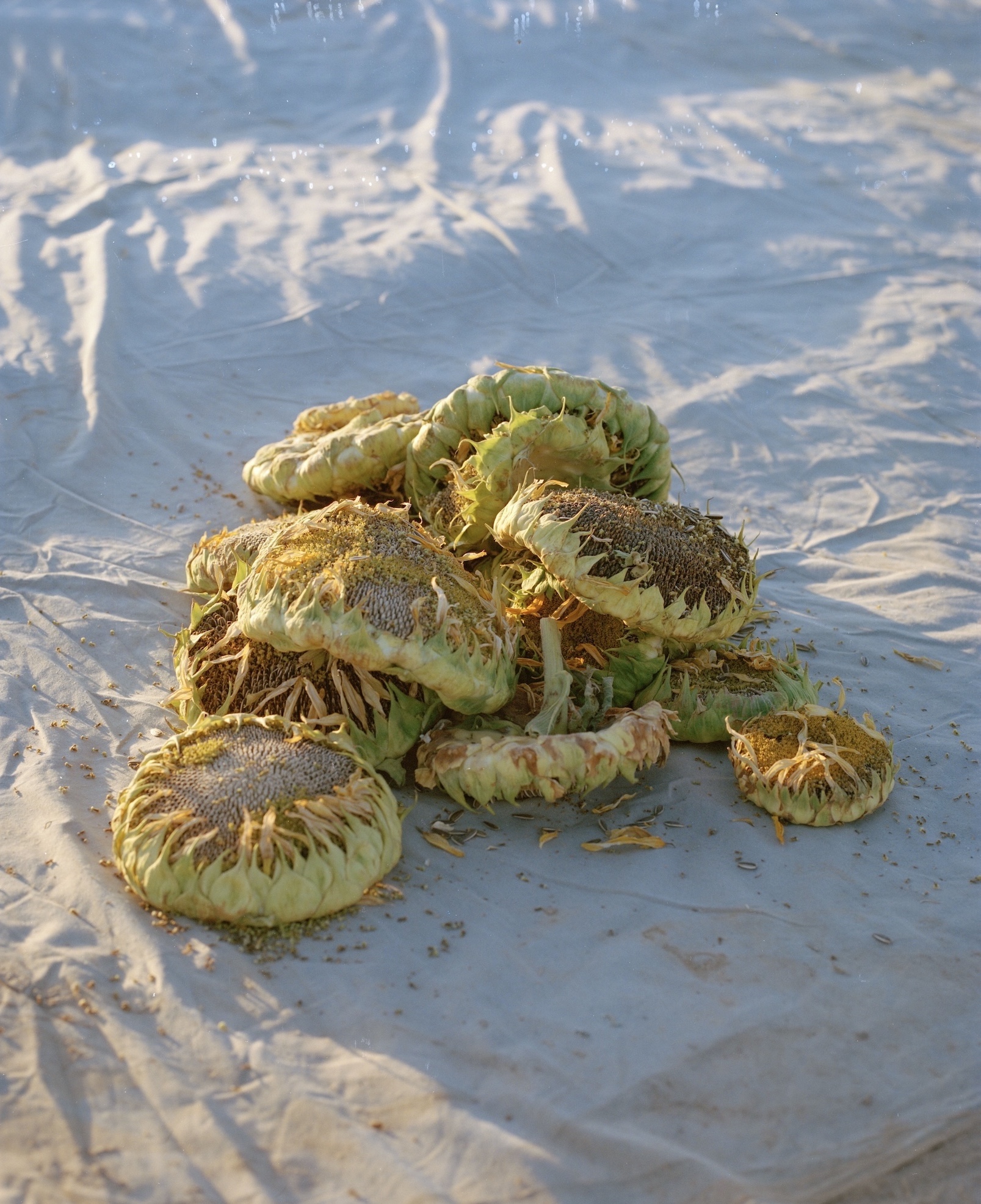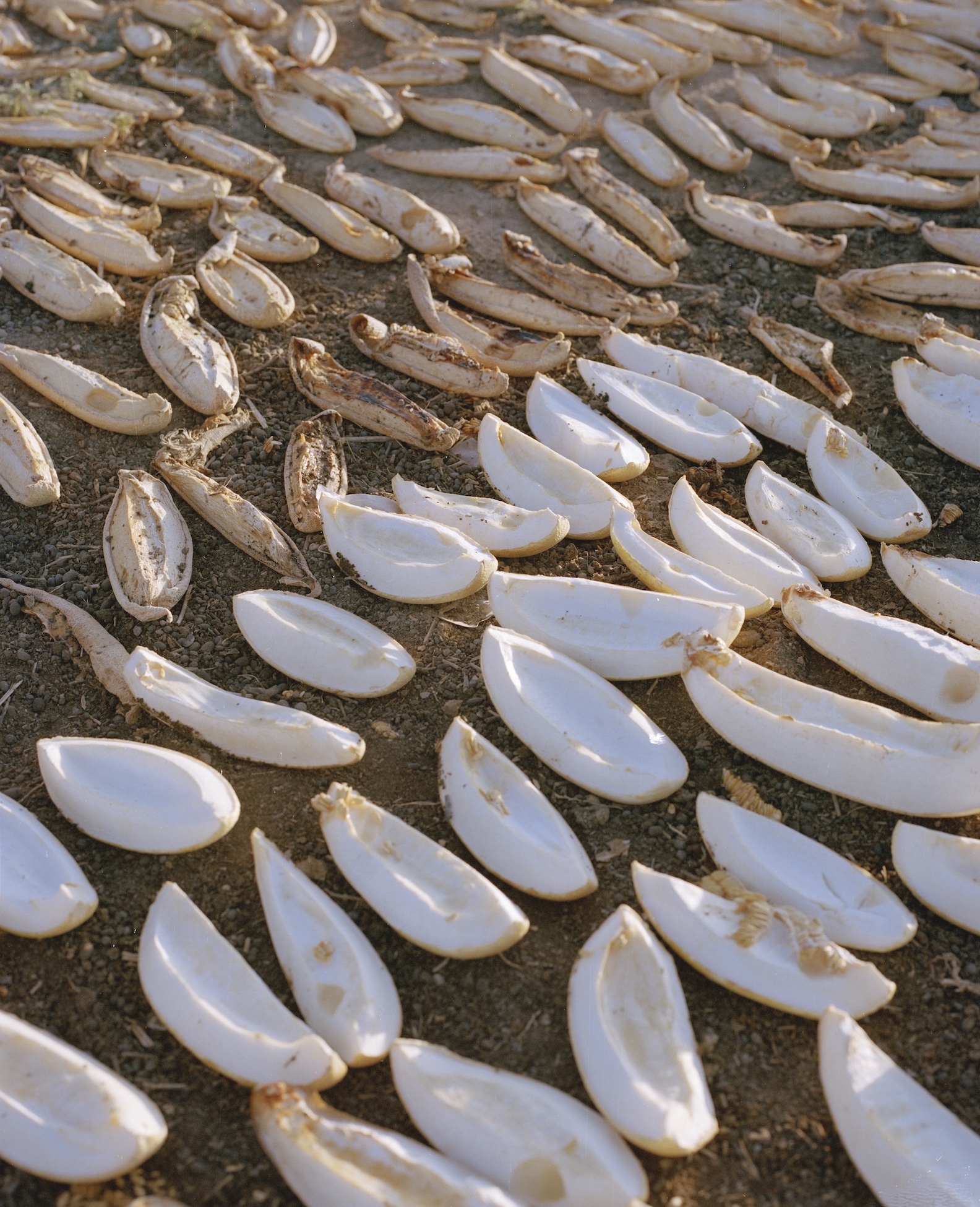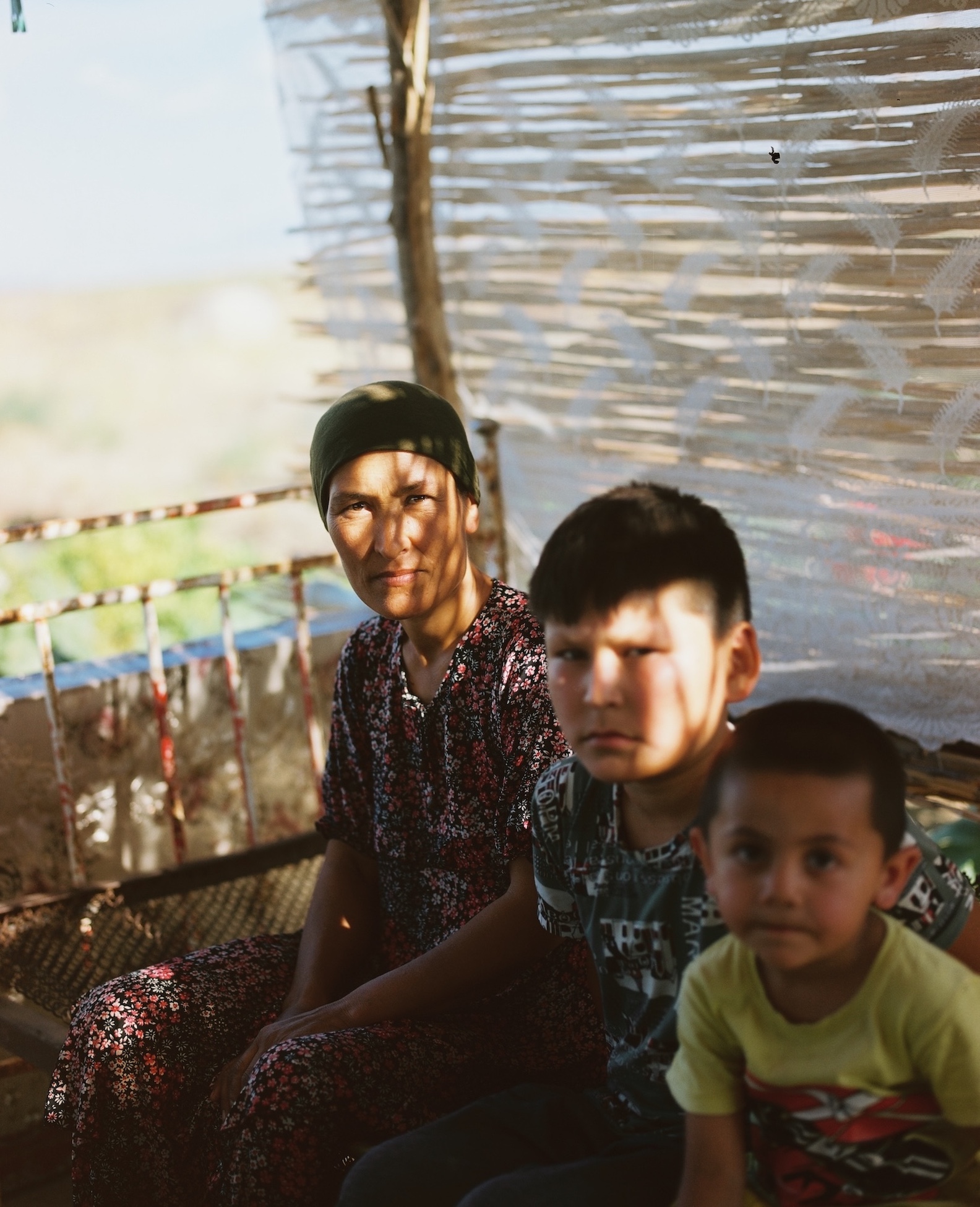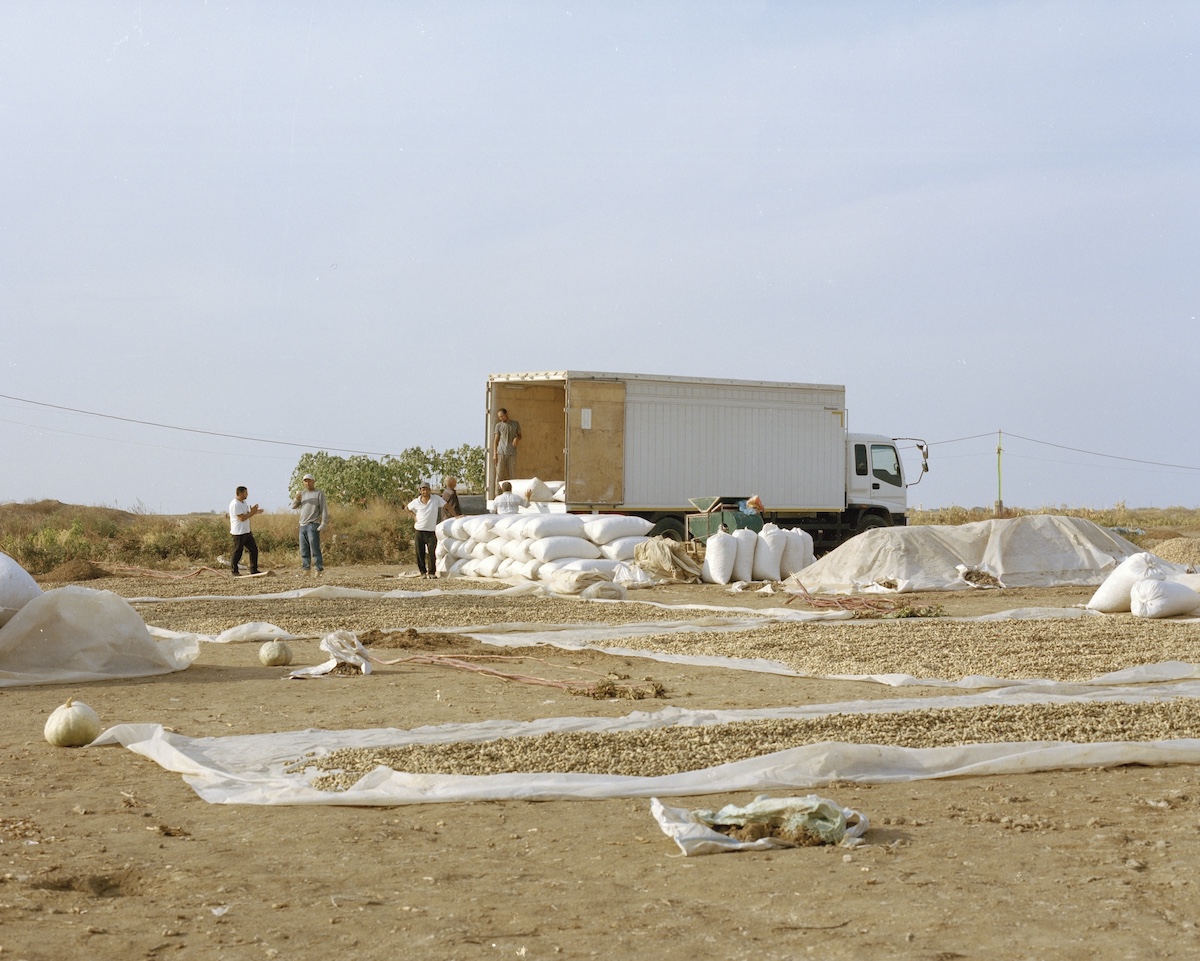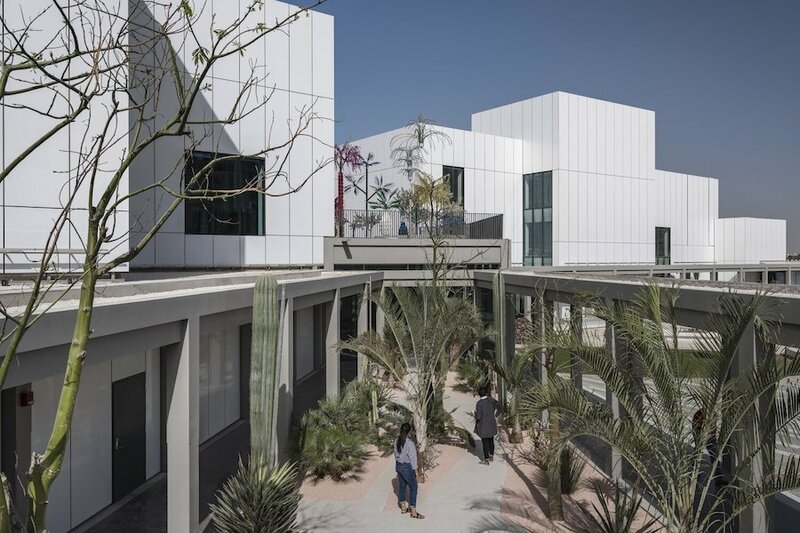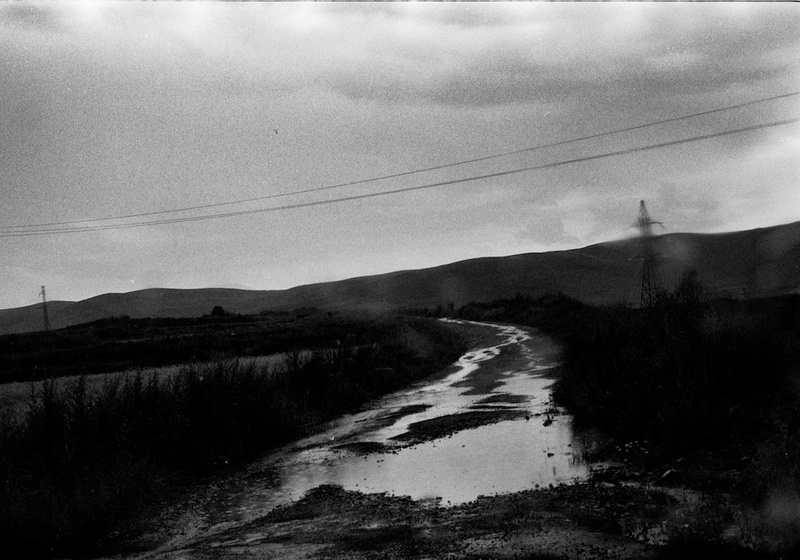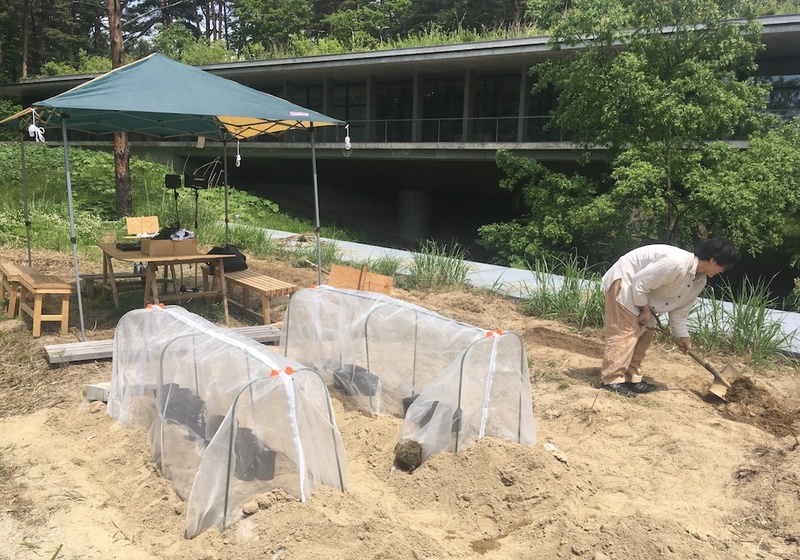
An oddly placed Eiffel Tower in an unassuming village in Uzbekistan hints at a unique intersection of dreams and labor. Through both text and documentary photography, artist Kamila Rustambekova tracks this confluence, as seasonal farmers craft homes and communities during their eight months working amidst the agricultural fields.
The village of Farish in the Jizzak region of Uzbekistan is a somewhat magical place, where an Eiffel Tower (“Farish” sounds almost like “Paris” in Uzbek and Russian) greets you at the entrance. It is a place where people build their own world that is not seen from outside. My project is the story of a large community of seasonal agricultural workers. For eight months a year, they live on the land of others with their whole families, build houses, work with their hands, grow tomatoes, melons, and watermelons, raise their children, and watch Turkish TV series in the evenings. And then, for the winter, they go to their home in the east, to the Fergana Valley.
It is a portrait of the spirit of seasonal farmers, who, in the face of challenging labor conditions, build lives marked by resilience and an unyielding sense of community. This project, at its core, is a tribute to these families who embody the heart and soul of Uzbekistan's seasonal agriculture, their stories offering a poignant reflection of the country's socio-cultural landscape and resisting the image of Uzbekistan portrayed on national television and by Western orientalist misconceptions.
My far uncle's (from my grandmother’s side) fields served as a stage for this project. In addition to my grandmother’s relatives, my grandfather was born there and lived there until he was 6 years old, until the war began. As a child, he often told us about this beautiful, blooming place, and I thought that my grandfather was so cool because he was going so often to “Paris.”
Farish is like Paris, Texas, only Paris, Jizzakh. The Uzbek dream is Paris. There are many replicas of the Eiffel Towers in various parts of Uzbekistan; it’s an obsession with Paris in some way. By an obsession with Paris I mean patterns on everything that exists, from panties to wallpaper. In Tashkent there is even a “Parisian” residential complex, with an Eiffel Tower glowing on the facade. This applies not only to Tashkent; it exists throughout the country. I am also a part of this dream. I have raved about Paris, studied French for a year, and sent requests to the universe to be there. Sometimes I have dreams that I am in Paris.

All images and text provided by Kamila Rustambekova as part of the project
"Paris," 2022-ongoing. All rights reserved.
